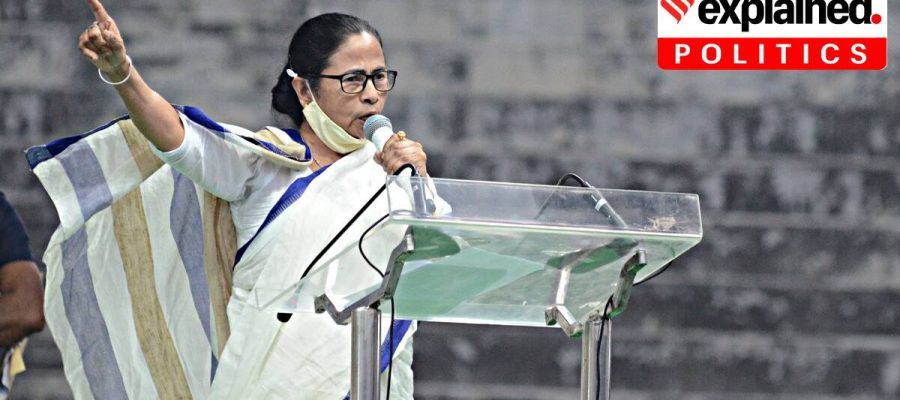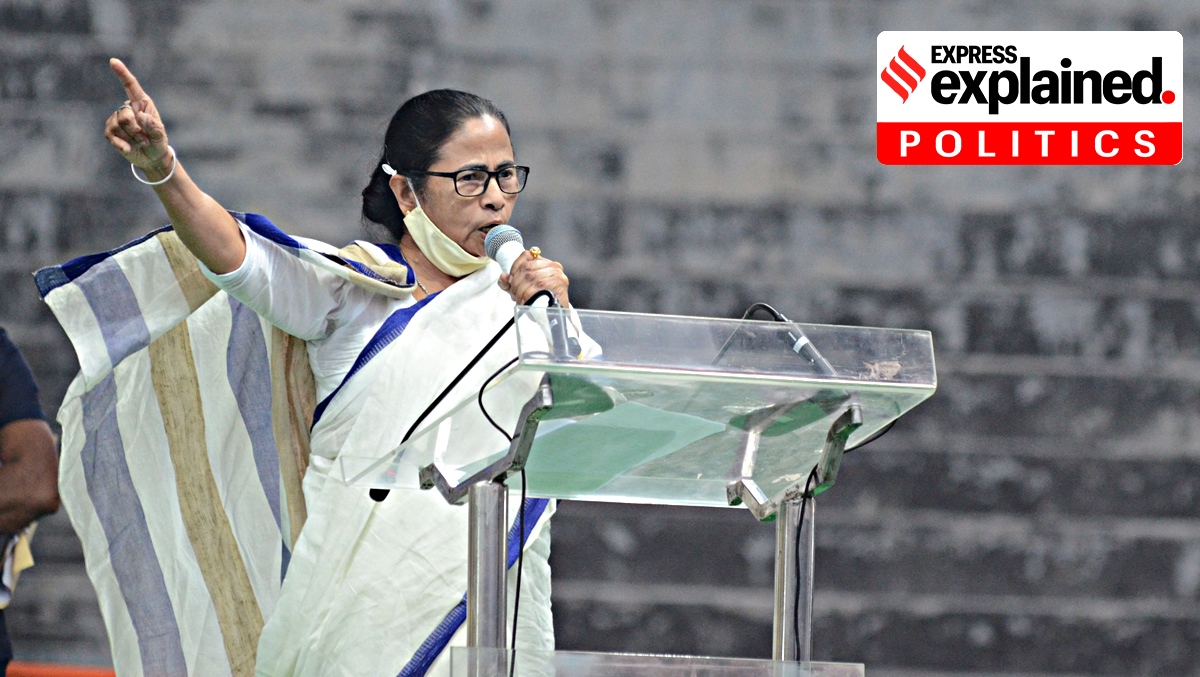Polling in West Bengal will be held on March 27, April 1, April 6, April 10, April 17, April 22, April 26 and April 29.
The Election Commission of India (ECI) Friday announced an unprecedented eight-phase election schedule for the 294-seat West Bengal Assembly starting from March 27 and going on till April 29. About 7,32,94,980 electors will exercise their franchise across 1,01,916 polling booths.
Interestingly, several districts in Bengal such as South 24 Parganas, North 24 Parganas, East Midnapore, West Midnapore and others will go for polling in multiple parts, a rare phenomenon in Bengal’s history.
According to the poll panel, such a prolonged election schedule was required due to festivals, the buffer for movement of security forces and an increased number of polling stations keeping in mind the Covid-19 protocols.
However, soon after poll dates were announced, West Bengal Chief Minister Mamata Banerjee, whose party Trinamool Congress is facing a tough challenge from BJP in the state, alleged that such a long poll schedule was suited to the saffron party.
Left parties also alleged that the poll panel has not come up with a credible justification for conducting an eight-phase election in West Bengal.
The BJP, on the other hand, welcomed the Election Commission’s announcement and claimed such a measure was taken to conduct a free and fair Assembly election in Bengal as the state has a history of witnessing violent elections.
The eight-phase election schedule
Polling in West Bengal will be held on March 27, April 1, April 6, April 10, April 17, April 22, April 26 and April 29. The entire electoral process, from the date of announcement till the date of counting, will be completed in 66 days.
The number of polling booths in West Bengal is 101,916 compared to 77,413 in 2016—an increase of 31.65 per cent. The number of voters in each polling station has been restricted to 1,000 from 1,500, resulting in an increase in the number of booths.
Although the election was held in seven phases (one phase divided in two parts), it took the Election Commission 77 days to complete the electoral process in 2016. As there were over 77,000 polling booths, about 11,000 booths went to polls in each phase in 2016. The number of polling stations this time has gone up to over 1 lakh, therefore more than 12,000 polling stations on average would go to polls in each phase.
What it means to Election Commission
The prolonged election schedule is a clear indication that the Election Commission is determined to conduct a peaceful Assembly election in the state. More phases mean better and adequate distribution of adequate central forces with utmost importance on maintaining law and order situation.
The EC has already sent 125 companies of CAPF to the state (before poll dates were announced) for confidence-building measures. The step was taken following submissions made by political parties to ensure a violence-free election and boost the confidence of voters. By holding multiple phases, the movement of CAPF would be smooth.
On the other hand, the election in several districts will be held in two to three parts. This has been done to lay a specific focus on sensitive areas in a particular district and in constituencies where poll violence takes place the most. The intention was to stop the movement of anti-social elements from the same district gaining free access to sensitive areas if polls were held in such districts in a single phase.
For example, polling in the district of South 24 Parganas will be held in three parts. It is the same district where BJP national president JP Nadda’s convoy had come under an attack in December last year. This is also the district from where TMC MP and Chief Minister Mamata Banerjee’s nephew Abhishek Banerjee represents in the Lok Sabha.
In another instance, polling in 11 Assembly constituencies of state capital Kolkata will be held in two phases on April 26 and 29. Some Assembly constituencies in South 24 Parganas district such as Behala Purba, Behala Paschim, Kasba, Tollygunge and Jadavpur which comes under the Kolkata Municipal Corporation area and under the jurisdiction of Kolkata Police will go for polling on April 10. As a result, electors in Kolkata will witness voting on three separate days-a never seen before phenomenon.
What it means to political parties
The ruling TMC is likely to receive a setback due to this prolonged election schedule. As the party depends on its supremo Mamata Banerjee for poll campaigning, it now has to rethink the entire election campaign and prepare a fresh plan. As polling will be held simultaneously in north Bengal and south Bengal districts, laying focus in both parts of the state could be a daunting task.
On the other hand, polling in multiple parts in districts known to be TMC stronghold might ensure the election swing in the Opposition’s favour. The TMC has alleged that this has been done to help the BJP in most of the south Bengal districts where the BJP’s organisational strength is weak.
For the BJP, the eight-phase election schedule is likely to give enough time to party leaders to campaign across the state. As elections to other states are getting over in first three phases, BJP leaders will be able to give more time to Bengal in remaining phases and hold numerous rallies and public meetings.
Interestingly, in the first three phases, polling has been announced in Assembly constituencies where the BJP is on a strong ground. This will allow the BJP to focus on Assembly elections in other states before coming to Bengal with full force to concentrate on Assembly segments where it is facing a tough contest from the TMC.
Challenges for the commission
Although the schedule is likely to help the poll panel conduct election in a peaceful atmosphere, there are some challenges too.
By holding elections in multiple parts in several districts, the EC will find it difficult to seal the inter-district borders. Usually, district borders and inter-state border are sealed during election. However, as poll campaigning will go on in one part of the state and polling in another part, inter-state and inter-district borders will remain open. This will pose the risk of anti-social elements from other districts entering a poll-bound district.
On the other hand, West Bengal has 30 per cent Muslim population. Muslim dominated districts of Murshidabad, Malda and North Dinajpur are going to polls in the last three phases starting from April 22. As Ramzan month begins from April 12, polling in these districts is likely to inconvenience Muslim voters, poll officials and government officers.
Source: Read Full Article


